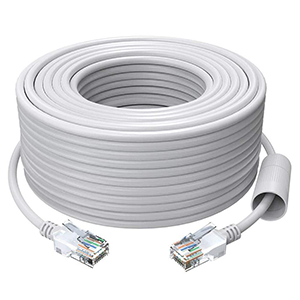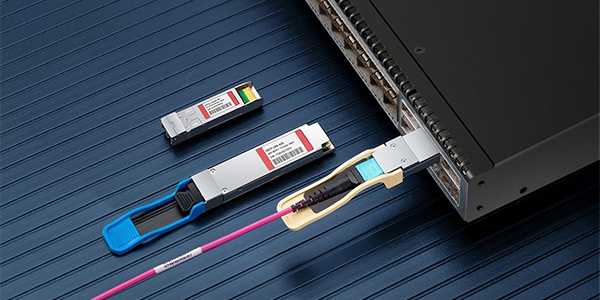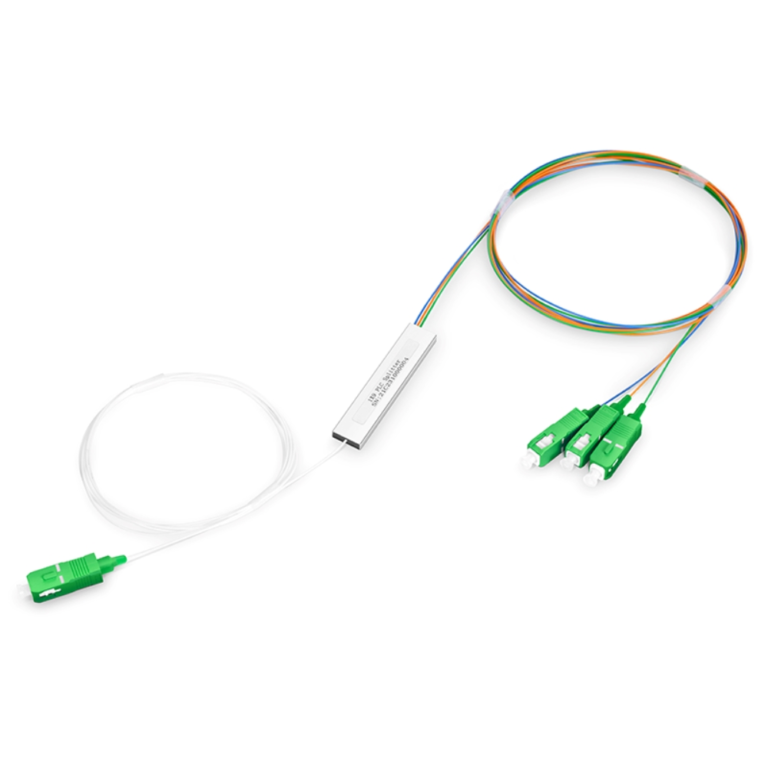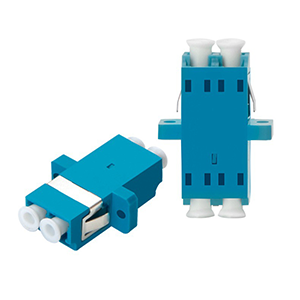I am pleased to introduce you to the 25G SFP28 Optical Module. In this article, I will explore the definition, basic principles of 25G SFP28, as well as its characteristics and advantages in different application fields.
As a high-speed optical module transmitter, 25G SFP28 provides high bandwidth and reliable data transmission capabilities. It adopts a small size and pluggable design, bringing greater flexibility and convenience to network deployment and configuration.
Introduction to 25G SFP28
Definition and rationale:
25G SFP28 (Small Form-Factor Pluggable 28) is an optical module used to achieve a data transmission rate of 25Gbps (gigabits per second). It is an upgraded version of SFP+ (Small Form-Factor Pluggable Plus), using a higher transmission rate.
The basic working principle of the 25G SFP28 optical module is similar to other optical modules. It converts electrical signals into optical signals through photoelectric conversion, then transmits the optical signals through optical fibers, and then converts the optical signals back into electrical signals at the receiving end. This photoelectric conversion process enables high-speed data transmission.
Application fields of 25G SFP28
Data center network:
In data center networks, 25G SFP28 is widely used in the following aspects:
-
High-density server interconnection: As the number of servers in data centers increases, high-density interconnection solutions are required. The 25G SFP28 optical module can provide high-speed, low-latency connections and support fast data transmission and communication between servers. It can be used for interconnections between servers, connections between servers and switches, and connections between servers and storage devices.
-
High-speed data transmission: Data centers need to handle a large amount of data traffic, including virtualization, cloud computing, big data analysis and other applications. The 25G SFP28 optical module provides a transmission rate of 25Gbps per second, which can meet the needs of high bandwidth and high throughput data transmission. It can support fast data transmission and processing, improving data center performance and efficiency.
-
Network expansion and upgrade: Data center networks need to be continuously expanded and upgraded to adapt to growing business needs. The 25G SFP28 optical module is replaceable and flexible, and can easily replace old optical modules or upgrade network equipment to provide higher bandwidth and performance.
Corporate network:
In enterprise networks, 25G SFP28 is also widely used to meet the needs of large-scale data transmission and high-speed interconnection.
-
High-speed data center interconnection: Data centers in enterprise networks usually require high-speed interconnection solutions. 25G SFP28 optical modules can be used to interconnect servers within the data center, as well as to connect the data center with other parts of the enterprise network. It can support fast data transmission and large-scale data processing, improving the efficiency and performance of enterprise networks.
-
High-density switch connections: Switches in enterprise networks often need to support a large number of network connections. 25G SFP28 optical modules can provide high-bandwidth and high-speed connections and are suitable for connecting high-density switches and other network equipment. It can support large-scale data transmission and traffic management in enterprise networks.
-
Data storage and backup: Enterprises usually need to conduct large-scale data storage and backup operations. 25G SFP28 optical modules can be used to connect storage devices and support high-speed data transmission and backup operations. It can provide stable connections and efficient data transmission to meet the data management needs of enterprises.
To sum up, 25G SFP28 is widely used in data center networks and enterprise networks. It supports high-density server interconnection, high-speed data transmission and large-scale data processing, providing reliable and efficient network connection solutions.
Features and advantages of 25G SFP28
-
High-speed transmission: 25G SFP28 optical module supports a data transmission rate of 25Gbps per second, providing relatively high bandwidth and throughput. It is suitable for applications that require high-speed data transmission, such as data centers, cloud computing, high-performance computing, etc.
-
Small size: The SFP28 optical module adopts a small-sized slot interface, allowing it to utilize space more effectively in high-density optical fiber connection environments. It is suitable for scenarios that require a large number of optical modules, such as switches, routers and other network equipment.
-
Single-mode and multi-mode support: 25G SFP28 optical module can support single-mode and multi-mode optical fiber to adapt to different optical fiber transmission needs. Single mode is suitable for long distance transmission, while multimode is suitable for short distance transmission.
-
High reliability and replaceability: SFP28 optical module has high reliability and replaceability and can be replaced or upgraded at any time. This enables network equipment to be flexibly configured and expanded based on needs.
-
Suitable for high-density environments: Because the 25G SFP28 optical module is small in size and supports high-speed transmission, it is very useful in environments that require high-density optical fiber connections. For example, in data centers, efficient server interconnection and network switching can be achieved by using 25G SFP28 optical modules.
In short, 25G SFP28 is a high-speed, small-sized optical module suitable for application scenarios that require high bandwidth and high-density optical fiber connections. It provides a reliable, replaceable solution for supporting high-speed data transfer and network expansion needs.
25G SFP28 optical module types
Single mode optical module:
The 25G SFP28 single-mode optical module is suitable for long-distance transmission needs and has the following characteristics and applicable scenarios:
-
Transmission distance: Single-mode optical fiber is suitable for long-distance transmission, and can usually support transmission distances from several kilometers to dozens of kilometers. The 25G SFP28 single-mode optical module can provide stable and reliable signal transmission and is suitable for application scenarios that need to span longer distances.
-
Fiber type: Single-mode optical modules use single-mode optical fibers, whose core diameter is small and can only transmit a single light wave mode. This kind of optical fiber is suitable for situations where the refractive index of light transmission is small, and can reduce the transmission loss of light.
-
High-bandwidth transmission: 25G SFP28 single-mode optical module supports a transmission rate of 25Gbps per second, providing high-bandwidth data transmission capabilities. It is suitable for application scenarios that require high-speed and high-bandwidth transmission, such as remote data center interconnection, optical fiber backbone networks, etc.
-
Long-distance communication: Due to the characteristics of single-mode optical fiber, the 25G SFP28 single-mode optical module can achieve long-distance communication and maintain low signal attenuation and distortion. It is suitable for scenarios that require remote communication and transmission across large areas.
Multimode optical module:
The 25G SFP28 multi-mode optical module is suitable for short-distance transmission needs and has the following characteristics and applicable scenarios:
-
Transmission distance: Multimode optical fiber is suitable for short-distance transmission and can usually support transmission distances of tens to hundreds of meters. The 25G SFP28 multi-mode optical module is suitable for application scenarios that require fast data transmission over a relatively short distance.
-
Fiber type: Multi-mode optical modules use multi-mode optical fiber, which has a larger core diameter and can transmit multiple light wave modes. Multimode fiber is suitable for situations where the refractive index of light transmission is large and can support shorter distance transmission.
-
Small and medium-sized data centers: 25G SFP28 multi-mode optical modules are suitable for small and medium-sized data centers and can meet the high-speed interconnection needs between servers. It can support fast data transfer and communication between servers, improving data center performance and response speed.
-
High-density switch connection: Multi-mode optical modules are also often used to connect high-density switches to achieve large-scale network connections. The 25G SFP28 multi-mode optical module provides high-bandwidth and high-speed connections and is suitable for connections between switches and other network devices in enterprise networks.
In short, the optical module types of 25G SFP28 include single-mode optical modules and multi-mode optical modules. Single-mode optical modules are suitable for long-distance transmission requirements, while multi-mode optical modules are suitable for short-distance transmission requirements. According to the actual application scenario and transmission distance requirements, you can select the appropriate optical module type.
25G SFP28 compatibility and slot interface
Compatibility points:
The 25G SFP28 optical module has the following points in terms of compatibility:
-
Backward compatibility: 25G SFP28 optical modules generally have downward compatibility and can interoperate with lower-rate SFP+ (10G) optical modules and equipment. This makes upgrading and migrating to 25G speeds in existing network infrastructure more flexible and convenient.
-
Protocol compatibility: The 25G SFP28 optical module is compatible with a variety of protocols and applications, including Ethernet, Fiber Channel (FC) and Fiber Distributed Data Interface (FDDI), etc. This enables 25G SFP28 to be widely supported and used in networks and applications in different fields.
-
Brand compatibility: 25G SFP28 optical modules are produced by many different suppliers, which follow corresponding industry standards to ensure compatibility and interoperability. However, when selecting optical modules, it is recommended to ensure compatibility with the brand and model of network equipment to ensure proper functionality and performance.
Slot interface:
Common slot interface types for 25G SFP28 optical modules include:
-
LC (Lucent Connector) interface: The LC interface is a miniaturized optical fiber connector that is widely used in the field of optical fiber communications. It features low insertion loss and high-precision alignment capabilities. 25G SFP28 modules usually use LC interface to provide reliable fiber optic connection.
-
SC (Subscriber Connector) interface: The SC interface is a common optical fiber connector with a convenient plug-in and pull-out design and good mechanical stability. Although the SC interface is less common in 25G SFP28 optical modules, it can still be found in some specific application scenarios.
-
MPO (Multi-fiber Push-On) interface: The MPO interface is a multi-fiber optical fiber connector, usually used for high-density connections of multi-mode optical fibers. In some specific 25G SFP28 applications, such as high-density interconnection in data center networks, the MPO interface may be used to support multi-channel transmission.
Note that the specific slot interface type may vary based on different vendors and devices. When selecting a 25G SFP28 optical module, it is recommended to ensure that its slot interface is compatible with the interface type of the network device to ensure correct connection and transmission.
Deployment and configuration of 25G SFP28
Optical module installation:
The following are general installation guidelines for 25G SFP28 optical modules:
-
Turn off the device: Before installing the optical module, make sure that the device where the optical module is to be installed has been turned off.
-
Verify the compatibility of the optical module and the device: Ensure that the selected 25G SFP28 optical module is compatible with the interface type and specifications of the device.
-
Clean the fiber optic connector: Use a clean, dust-free fiber cleaning rod or fiber cleaner to clean the fiber optic connector end face to ensure good optical signal transmission.
-
Insert the optical module into the slot: Carefully insert the 25G SFP28 optical module into the optical module slot of the device, making sure it matches the slot interface type and is correctly aligned with the slot.
-
Secure the optical module: Once the optical module is inserted into the slot, use the corresponding slot locking mechanism (such as screws or buckles) to secure the optical module in place.
-
Connect the optical fiber: Use the optical fiber connector to connect the optical fiber to the 25G SFP28 optical module. Make sure the connector plug is properly aligned and push in gently until the plug is fully inserted into the connector.
-
Start the device: After completing the installation of the optical module, start the device and perform necessary configuration and inspection to ensure that the optical module works properly.
Network Configuration:
Here are some common examples of network configuration methods for 25G SFP28:
-
Link Aggregation: Link aggregation bundles multiple physical links into a logical link to improve bandwidth and redundancy. For 25G SFP28 optical modules, you can configure link aggregation to connect multiple optical modules to the target device to increase the total bandwidth and reliability.
-
Optical module parameter adjustment: In some cases, you may need to adjust the parameters of the 25G SFP28 optical module to optimize network performance. This may include adjusting parameters such as the transmit and receive power, receive sensitivity, and equivalent input noise of the optical module. The specific parameter adjustment methods and available options will depend on the device and management software you use.
-
Network monitoring and management: Using appropriate network monitoring and management tools, you can monitor and manage the status and performance of 25G SFP28 optical modules. These tools can provide information about link quality, bandwidth utilization, error counts, and temperatures to help you monitor and troubleshoot the health of your network.
It should be noted that the specific network configuration methods and steps may vary depending on the device and network environment. It is recommended to refer to the user manual of the device or the configuration guide provided by the manufacturer to obtain more detailed and targeted 25G SFP28 network configuration information.
Advantages and future development of 25G SFP28
High speed transmission:
25G SFP28 provides the following high-speed data transmission advantages to meet growing network demands:
-
Increase bandwidth: Compared with the traditional 10G SFP+ optical module, the 25G SFP28 optical module can provide a higher data transmission rate, increasing the bandwidth to 25Gbps. This enables the network to handle more data traffic and application demands with the same physical infrastructure.
-
High-density interconnection: The small size and high-density design of the 25G SFP28 optical module enable more compact equipment interconnection in environments such as data centers. It can provide more port density, reduce cabinet space usage, and support larger-scale server and storage device interconnections.
-
Reduce power consumption: 25G SFP28 optical modules have lower power consumption compared to 40G and 100G optical modules. This is important in environments that require energy efficiency, such as data centers and enterprise networks. The low-power design helps reduce energy costs and reduces the need for heat dissipation and cooling systems.
Future trends:
As the current high-speed optical module technology, 25G SFP28 still has some development trends and application directions in the future:
-
Higher transmission rate: As network demands continue to grow, higher-rate optical module technology may appear in the future. For example, 50G and 100G optical modules are already in development and may become the next generation technology of 25G SFP28. This will further enhance network bandwidth and performance to meet growing data traffic demands.
-
Multi-mode and single-mode support: Currently, 25G SFP28 is mainly used in multi-mode optical fiber networks. However, with single-mode light As the demand for optical fiber networks increases, 25G SFP28 optical modules supporting single-mode optical fiber may appear in the future. This will expand the application scope of 25G SFP28 and meet the needs of different network environments.
-
Data center expansion: 25G SFP28 optical modules have been widely used in data center networks and will continue to expand in the future. With the development of technologies such as cloud computing, big data and artificial intelligence, the scale and complexity of data centers will further increase, and the demand for higher bandwidth and higher performance networks will also continue to grow.
-
5G and Internet of Things (IoT) applications: With the promotion of 5G communications and IoT, the demand for high-speed, low-latency and reliable network connections is also increasing. 25G SFP28 optical modules may play an important role in supporting applications such as 5G base station interconnection, IoT device connectivity, and edge computing.
It should be noted that future development trends may be affected by technological progress, market demand and industry standards. Therefore, with the evolution of technology and changes in the market, the application and development direction of 25G SFP28 may be adjusted and expanded.
Summarize:
25G SFP28 optical module transmitter stands out for its high-speed transmission, small size and flexibility. As network demands continue to grow, the future development of 25G SFP28 in technology and applications will become more extensive and diversified. Choosing a 25G SFP28 optical module transmitter will provide your network with high-speed, reliable data transmission and meet changing needs.
If you are looking for an efficient optical module transmitter, 25G SFP28 will be a good choice. Its performance and applicability make it an essential component in modern networks. Don’t hesitate to try introducing 25G SFP28 optical module transmitter to improve your network performance and efficiency!
- What is a 25G SFP28 port?
- Can SFP28 do 10G?
- Can I use 25G SFP for 10G?
- What is the distance for 25G multimode?
- What is the distance of multimode SFP?
- What is the distance range of SFP?
- What is the maximum distance for SFP 10G LR?
- What is the range of SFP cable?
-
25G SFP28 1310nm 10km LC Optical Transceiver Module
-
25G SFP28 1310nm 30km LC Optical Transceiver Module
-
25G SFP28 850nm 100m LC Optical Transceiver Module
-
25G SFP28 850nm 300m LC Optical Transceiver Module
-
25G SFP8 1300nm 80km LC Optical Transceiver Module
-
25G SFP8 1310nm 40km LC Optical Transceiver Module






